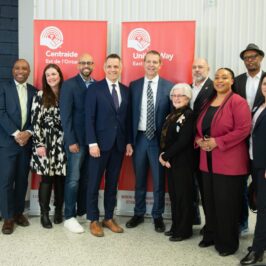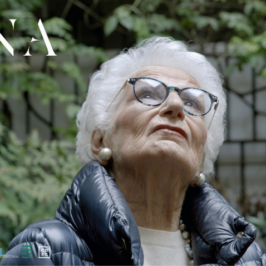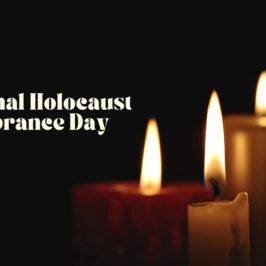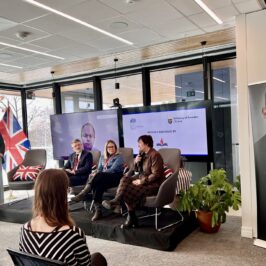By Kenra Mroz
Kenra Mroz is an English, Writer’s Craft and Special Education teacher at Sir Robert Borden High School. She is also the Equity and Diversity co-representative and co-ordinates the school’s Social Justice Club.
This July I had the opportunity to participate in the Canadian Society for Yad Vashem’s Summer Scholarship Program. Along with nine other Canadian educators, I traveled to Israel and attended a three-week-intensive course at the International School for Holocaust Studies at Yad Vashem. The program includes seminars and workshops delivered from some of the top experts in the field of Holocaust education, as well as educational field trips and time set aside to meet and speak with Holocaust survivors. In addition to our group from Canada there were Jewish and non-Jewish participants from the United States, Italy, Serbia, Romania, Turkey and Israel.
I applied to this program because I wanted to grow and develop as a Holocaust educator. I include an in-depth Holocaust unit in my grade 12 Writer’s Craft course; however, for the past few years, I have been taking the same approach with respect to including Holocaust history and legacy in the educational work that I do. I did not want to fall into the “trap” of becoming comfortable to the point where I might feel as though I know all that I need to know. I consider this attitude to be dangerous territory for an educator. I was also hoping to find ways in which to engage co-workers, community members, family and friends in associated conversations. I firmly believe that Holocaust education allows for fundamental and universal connections to be made to all forms of discrimination — both historical and current. Thanks to the generous support of CSYV and Yad Vashem, I was able to do so as a participant in a program specifically designed for Holocaust educators.
The ISHS program is detailed and intensive, beginning in ancient centuries and continuing up to present-day Israel and abroad. In addition to receiving integral information regarding Judaism, anti-Jewish sentiment throughout the ages, and the strengths and accomplishments of the Jewish people, we were also given a comprehensive introduction to the many resources that Yad Vashem provides, ensuring that we had a good understanding of Yad Vashem’s impressive and thought-provoking campus. Spending three weeks at Yad Vashem provided me with time to explore its resources and wander about the campus and appreciate its beauty and lessons. I was constantly drawn back to the Children’s Memorial, which is both mesmerizing and haunting.
In addition to valuable instructional time spent at Yad Vashem, our program included educational field trips to Tel Aviv and northern Israel, as well as several optional tours. In Tel Aviv we learned more about the Palmach and Independence movements, while our trip up north focused upon the establishment and protection of the kibbutzim and included a tour of the Ghetto Fighters’ Museum. I believe that these legacies provide excellent examples of male-female gender equality. The admirable women who contributed to these movements worked, built and fought alongside the men — and were recognized and honoured for their contributions.
One of the most deeply meaningful components of this program is the opportunity to meet, listen to and interact directly with Holocaust survivors. My experience of sharing both physical and emotional space with these very special people has inspired me to continue to do so through taking every possible opportunity to invite Holocaust survivors into my classroom. While in Israel, I had the honour and privilege of meeting six survivors: Mr. David Frenkel; Mrs. Rena Quint; Mr. Daniel Gold; Mr. Yehuda Bacon and “Schindler Jews”, Nachum and Genya Manor. Listening to the voices of Holocaust legacy achieves a great deal with respect to emphasizing the reality that the number 6,000,000 must be understood in terms of individual human beings and their personal stories. In this way, it is impossible not to form a human connection, as all of us possess shared physical and emotional traits. While people might be able to maintain a certain level of detachment when referencing numbers and statistics, names, faces and testimonies leave a palpable impact.
I was both humbled and grateful with respect to how open and honest these survivors were, in terms of sharing the details of their personal stories — and journeys. I learned about how David Frenkel’s mother, a talented seamstress, was forced to sew yellow stars for the members of their town . . . and how she remains, to this day, his “hero” for her selflessness in sharing her own breastmilk with the starved babies of other mothers (whose milk had dried up) while they were in the first of two concentration camps. I contemplated what it would have been like if, at age six, I had to disguise myself as a boy — as Rena Quint did — in order to stay alive through slave labour at a glass factory. I imagined having to hide, along with Daniel Gold, on a farm with limited resources, praying for liberation to come before we were discovered. I admired the beautiful –and devastating– artwork of Yehuda Bacon and was inspired by his message that beauty and goodness can be found in all people. Due to the extensive work that I have done with Schindler’s List, it was deeply meaningful to me to meet and hear directly from Nachum and Genya Manor, who have been married for 70 years and whose loving commitment to one another began with a ring that he made as a gift for her eighteenth birthday. She has never taken it off.
This experience was — and continues to be — inspiring, thought-provoking and life-changing. It has opened up my mind –and heart– to new ideas and approaches with which to enrich the work that I do at school, as well as my own personal growth and development as a Holocaust educator. I am looking forward to continuing my journey through working with CSYV and CHES. I would strongly encourage interested educators to look into CSYV’s Summer Scholarship Program.
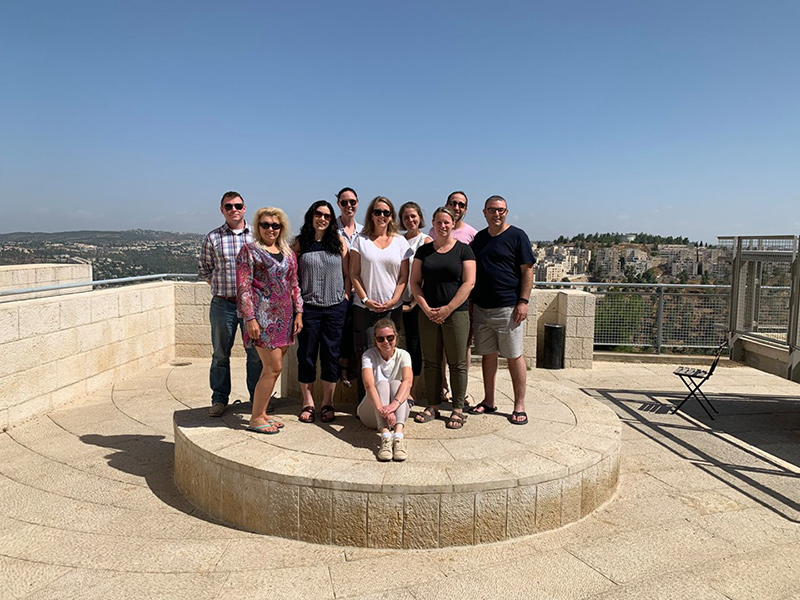
Click here to read other “Descendants of Holocaust Survivors” blogs.



